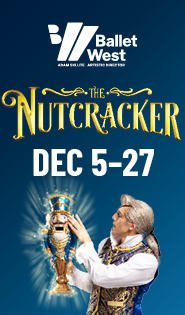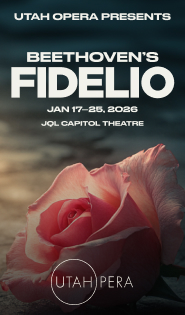Classical Music
Poschner, Utah Symphony and Gluzman shine in Strauss and Shostakovich
After an absence of several years, violinist Vadim Gluzman made a […]
Poschner, Utah Symphony explore tragedy, deliverance with Tchaikovsky and Fauré
Markus Poschner, the Utah Symphony’s music director designate (he assumes the […]
Theater
Critic’s Choice 2025-26
Moravec: The Shining. Utah Opera. October 11–19. Stephen King’s horror classic […]
Concert review
Beethoven fares best with return of Inkinen and Wosner to Utah Symphony
Pianist Shai Wosner and conductor Pietari Inkinen haven’t been on the Abravanel Hall stage in a number of years, but this weekend they are making a joint return engagement with the Utah Symphony. And at Friday’s performance they showed themselves to be worthy musical partners in Beethoven’s Piano Concerto No. 3.
Written in 1800, the Third is still a product of the classical era in its framework, yet also exhibits Beethoven’s budding romanticism. And Wosner and Inkinen captured this duality in their well-thought out account. At times it felt Mozartean in their carefully structured reading, but at the same time they allowed the romantic tension of the music to blossom.
The Israeli-born Wosner is a sensitive pianist who is very understated at the keyboard; he lets the music speak for itself. And often, in the opening movement especially, he allowed his part to be enveloped within the orchestral texture but without ever sacrificing its soloistic character. Inkinen mirrored Wosner’s approach to the music with his direction, allowing the piano and orchestra to blend well together.
In the first movement, the darker and more dramatic moments were never overemphasized. Both the soloist and conductor brought the lyricism to the fore. And even in the cadenza, that opens with bold strokes, Wosner’s playing was forceful but always melodic.
The Largo, opens with a lengthy piano solo and Wosner set the stage for a nuanced, expressive reading that captured the poignancy of the music. Inkinen kept that mood in his direction, allowing the muted strings to play with fluid phrasing and subtly inflected expression.
In the lively Rondo finale, Wosner emphasized the bold lines of the opening theme with his robust playing, and contrasted that wonderfully with the softer sections. But throughout, Wosner exhibited decisive, colorful playing that Inkinen picked up and conveyed to the orchestra.
Wosner also treated the audience to a delightful encore: Schubert’s “Hungarian Melody” in B minor, D. 817. This captivating little piece flows with unassuming charm that Wosner expressed with nuanced inflection.
Dvorak’s Symphony No. 7 was on the program after intermission. Inkinen emphasized the lyrical side of the music in the first two movements while diving into the rhythmic spirit of the Scherzo and finally letting loose with an explosive account of the finale.
The Finnish conductor took the first movement at a leisurely tempo, coaxing expansive playing from the orchestra, especially from the strings, and letting the violins soar over the orchestra at times. And while he underscored the warmth of the orchestral textures he still brought out the romantic passion that runs through the movement.
The slow second movement is quite Brahmsian in its melodic structure and harmonic language, but could never be mistaken for anything but Dvorak in its abrupt shifts between tender melodicism and robustly bold passages. Inkinen set a very deliberately paced tempo and allowed the orchestra to play with well delineated phrasing that captured the character of the music.
Inkinen took the Scherzo at a sturdy tempo that underscored the lilting flow of the music and was marked by fine playing by the strings and in particular by the woodwinds.
The closing movement was another matter altogether. While there were some remarkable moments of nuanced playing in Inkinen’s reading, the conductor lost his way in the score and ended the movement in a sonic mess of loud strings and woodwinds and even louder brass.
The concert opened with Unsuk Chin’s subito con forza. The brief five-minute piece, written in 2020 to celebrate Beethoven’s 250th birthday, is a clever tribute to the German composer. The South Korean composer throws in short fragments from several of Beethoven’s works, including the Coriolan Overture, the “Emperor” Concerto and the famous four-note motif from the Fifth Symphony, all clad in 21st century dissonant garb. The orchestra played with crisp, precise phrasings and Inkinen brought cohesiveness to the frenetic energy of the music.
The program will be repeated 7:30 p.m. Saturday. utahsymphony.org
Calendar
December 16
Utah Symphony
“Here Comes Santa Claus”
7 p.m. Noorda […]
Dance
Ballet West’s “Nutcracker” works its holiday magic once again
Ballet West kicked off the holiday season with (surprise!) The Nutcracker […]
Ballet West shows what love’s got to do with it in high-contrast “Midsummer” double-bill
Love—its presence, absence, and manipulation through wedding preparations, courtship, and devotion—dominated […]




